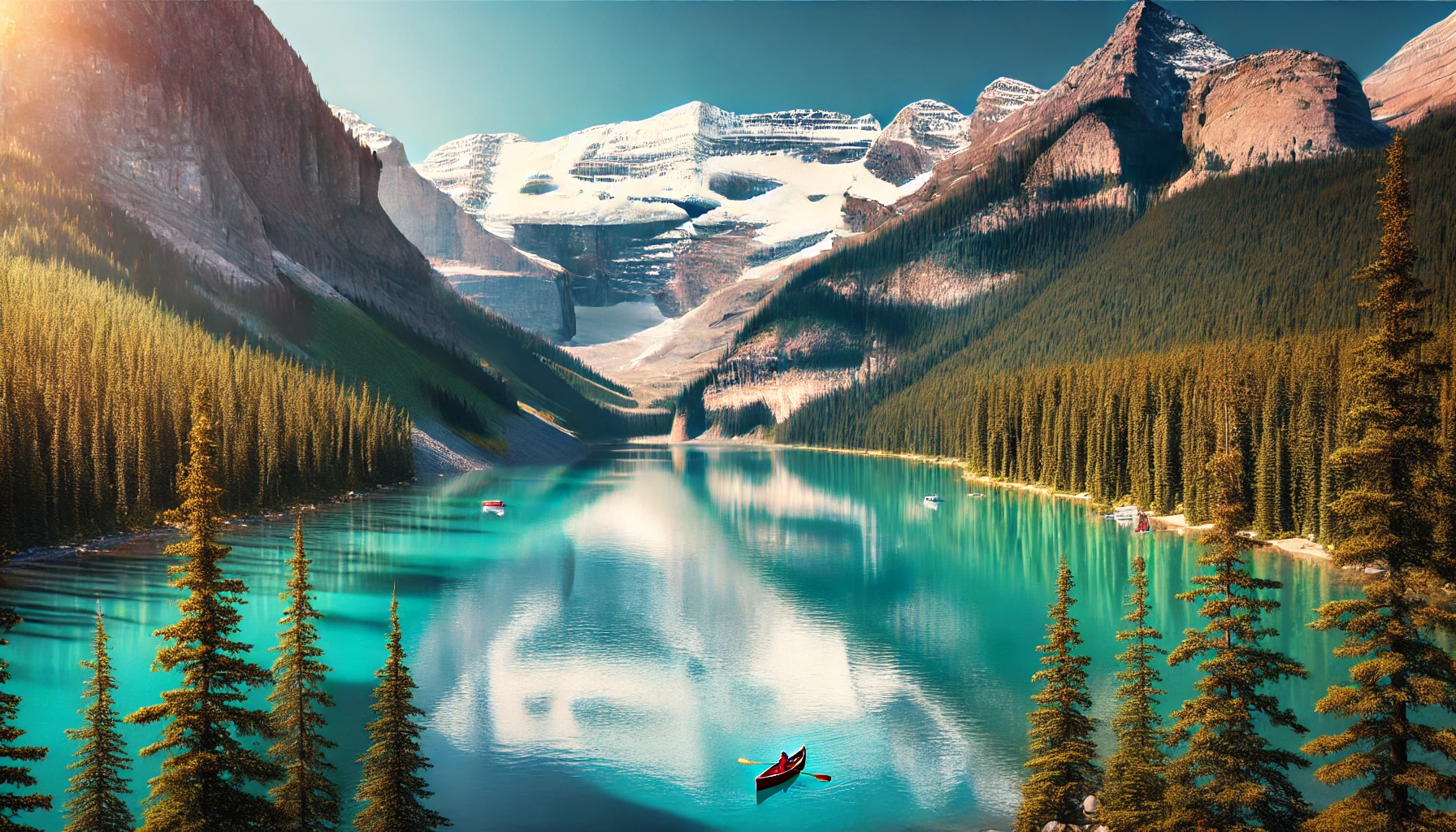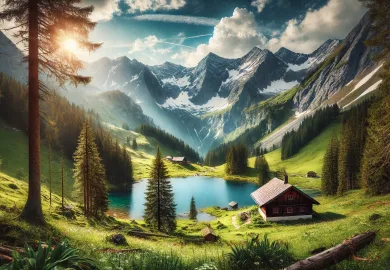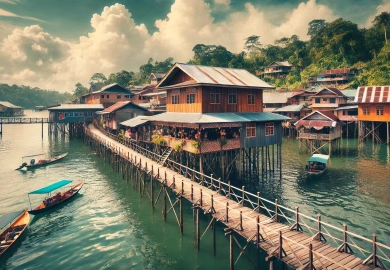
Canada, known for its breathtaking landscapes, vibrant cities, and diverse culture, offers some of the best travel experiences in the world. Whether you’re an adventure enthusiast, a nature lover, or someone who enjoys urban exploration, Canada has something for everyone. In this article, we’ll take you on a journey through the most captivating hotspots in Canada, showcasing why they should be on your travel bucket list. From the rugged wilderness of the Rockies to the charming streets of Quebec City, each destination offers unique experiences that are sure to leave lasting memories.
Banff National Park: A Natural Wonderland in the Rockies
Nestled in the heart of the Canadian Rockies, Banff National Park is one of Canada’s most iconic travel destinations. This UNESCO World Heritage site is renowned for its stunning landscapes, including towering mountain peaks, crystal-clear lakes, and abundant wildlife. For nature enthusiasts and outdoor adventurers, Banff offers a plethora of activities, from hiking and skiing to wildlife viewing and canoeing.
One of the most popular attractions in Banff is Lake Louise, known for its striking turquoise waters and the Fairmont Chateau Lake Louise perched on its shores. The lake is a perfect spot for canoeing in the summer and ice skating in the winter, providing year-round beauty and recreation. Nearby, Moraine Lake offers similarly stunning views, with its deep blue waters surrounded by the rugged peaks of the Valley of the Ten Peaks.
In addition to its natural beauty, Banff is home to a charming town that offers a variety of dining, shopping, and cultural experiences. Visitors can enjoy a relaxing soak in the Banff Upper Hot Springs, explore the Banff Park Museum, or take a scenic drive along the Icefields Parkway, one of the most picturesque roads in the world.
Vancouver: A Perfect Blend of Urban Sophistication and Natural Beauty
Vancouver, situated on the west coast of Canada, is a vibrant city that perfectly blends urban sophistication with natural beauty. Surrounded by mountains and ocean, Vancouver offers a diverse range of activities, from exploring its bustling downtown to hiking in nearby wilderness areas.
Stanley Park, one of the largest urban parks in North America, is a must-visit for anyone traveling to Vancouver. The park’s Seawall offers stunning views of the city skyline, mountains, and ocean, making it a popular spot for walking, cycling, and rollerblading. Within the park, visitors can explore beautiful gardens, beaches, and the Vancouver Aquarium, which is home to a variety of marine life.
Vancouver’s cultural scene is equally impressive, with world-class museums, art galleries, and theaters. Granville Island, a vibrant cultural district, is a hub for arts and crafts, local markets, and delicious food. The island’s Public Market is a food lover’s paradise, offering a wide variety of fresh produce, gourmet foods, and artisanal products.
For those who enjoy outdoor adventures, Vancouver is an ideal base for exploring the surrounding natural areas. The nearby Grouse Mountain offers year-round activities, including skiing, snowboarding, and hiking. The Capilano Suspension Bridge Park is another popular attraction, where visitors can walk among the treetops and enjoy breathtaking views of the forest below.
Quebec City: A Historic Gem with European Charm
Quebec City, the capital of the province of Quebec, is a city steeped in history and European charm. As one of the oldest cities in North America, Quebec City offers a unique blend of old-world architecture, cobblestone streets, and a rich cultural heritage. The city’s historic district, Old Quebec, is a UNESCO World Heritage site and a must-visit destination for any traveler.
Old Quebec is home to some of the most well-preserved colonial architecture in North America, with landmarks such as the Château Frontenac, a grand hotel that dominates the city skyline, and the Fortifications of Quebec, the only remaining fortified city walls in the Americas north of Mexico. Visitors can explore the narrow streets of Old Quebec, lined with charming shops, cafes, and restaurants, or take a leisurely stroll along the Dufferin Terrace, which offers panoramic views of the St. Lawrence River.
The city’s rich cultural scene is evident in its many museums, galleries, and festivals. The Musée de la Civilisation offers fascinating exhibits on Quebec’s history and culture, while the Musée National des Beaux-Arts du Québec showcases an impressive collection of Quebecois art. Quebec City is also known for its vibrant festivals, including the Winter Carnival, one of the largest winter festivals in the world, and the Festival d’été de Québec, a major music festival that attracts international artists.
Beyond its historic charm, Quebec City offers a variety of outdoor activities, from exploring the nearby Montmorency Falls to hiking in the Laurentian Mountains. In the winter, the city becomes a winter wonderland, with opportunities for ice skating, skiing, and dog sledding.
Toronto: A Dynamic Metropolis with World-Class Attractions
Toronto, the largest city in Canada, is a dynamic metropolis that offers a diverse range of attractions and experiences. Known for its multiculturalism, Toronto is a melting pot of cultures, with vibrant neighborhoods, world-class museums, and a thriving food scene. Whether you’re interested in exploring the city’s cultural institutions, enjoying its diverse culinary offerings, or experiencing its lively nightlife, Toronto has something for everyone.
One of Toronto’s most iconic landmarks is the CN Tower, one of the tallest freestanding structures in the world. Visitors can take an elevator to the observation deck for breathtaking views of the city and Lake Ontario, or for the more adventurous, try the EdgeWalk, a hands-free walk around the tower’s outer edge. Another must-visit attraction is the Royal Ontario Museum, one of the largest museums in North America, which houses an extensive collection of art, culture, and natural history.
Toronto is also known for its diverse neighborhoods, each offering a unique cultural experience. Kensington Market, for example, is a bohemian neighborhood known for its eclectic mix of shops, cafes, and street art, while the Distillery District is a historic area with beautifully preserved Victorian-era buildings, art galleries, and trendy restaurants. For those interested in shopping, the Eaton Centre is a massive shopping mall located in the heart of downtown, offering a wide range of stores and boutiques.
The city’s food scene is equally impressive, with a diverse range of cuisines to choose from. Toronto is home to some of the best restaurants in Canada, offering everything from gourmet dining to street food. St. Lawrence Market, one of the world’s great markets, is a food lover’s paradise, offering a wide variety of fresh produce, meats, and artisanal products.
Conclusion: Embark on a Canadian Adventure
Canada is a country of immense beauty and diversity, offering a wealth of travel experiences for every type of traveler. From the natural wonders of Banff National Park and the vibrant urban life of Vancouver to the historic charm of Quebec City and the dynamic attractions of Toronto, each destination offers something unique and unforgettable.
Whether you’re planning a trip to Canada for the first time or returning to explore more of this incredible country, the travel hotspots highlighted in this article are sure to provide you with an enriching and memorable experience. So pack your bags, grab your camera, and get ready to embark on a Canadian adventure that will leave you with memories to last a lifetime.








